I was scared, but so was the thought of gliding across that shiny surface.
I had no idea this moment of fear would be the start of a lifelong love. Ice skating is about the thrill of movement, the art of expression, and the joy of overcoming fear.
Whether you’re a beginner or looking to improve, this guide will take you from your first steps to more advanced skills.
Getting Started: The Basics of Ice Skating
Before twirling like a figure skater or zooming like a hockey player, you must master the basics. Ice skating is all about balance, edge control, and momentum.
Here’s what you need to know:
Choosing the Right Skates
Your journey starts with choosing the right skates. For beginners, renting skates at your local rink is a good place to start.
They should fit snugly, with about a quarter of an inch of space at the toe.
You should invest in your pair as you get more serious. Figure skates have a toe pick and are for artistic skating, and hockey skates are for speed and agility.

When choosing your skates, consider the following:
- Fit: Skates should be snug but not painful. Your toes should touch the end of the boot when standing.
- Ankle support: Ensure the boot has good ankle support, especially for beginners.
- Purpose: Do you want to figure skate, hockey, or recreational skate?
- Quality: Buy a pair that will last and support you as you improve.
Safety First
Ice is hard, and you will fall. Wear protective gear, especially a helmet, if you’re a beginner.

Learn to fall safely by bending your knees and leaning to the side; don’t try to catch yourself with your hands.
Additional safety tips:
- Wearing gloves or mittens to protect your hands
- Dressing in layers to stay warm without overheating
- Avoiding loose clothing that can get caught on your skates or the ice
- Being aware of other skaters and rink rules
The Skating Position
Stand with your feet shoulder-width apart, knees slightly bent, and arms relaxed by your sides. This lowers your center of gravity and stability.
Think of it as an athletic position – ready to go!
To master the skating position:
- Keep your weight over the middle of your skates
- Engage your core for better balance
- Look ahead, not down at your feet
- Relax your shoulders and breathe deeply
Marching and Gliding
Start by marching in place, lifting each foot off the ice. Once you’re comfortable, try marching forward.
Gradually transition to gliding by pushing off with one foot and gliding on the other.
This is the base of all skating movements.
To practice marching and gliding:
- Start with small steps, focus on balance
- As you get more confident, lengthen your glides
- Practice shifting your weight from one foot to the other
- Use your arms for balance; keep them slightly away from your body
Basic Skills
Once you’re comfortable, it’s time to fine-tune:
The Push
Good skating comes from a strong push. Push to the side and back, not straight back.
This diagonal push propels you forward more.
To improve your push:
- Bend your knees before you push
- Push with the whole blade, not just the toe
- Extend your leg as you push
- Bring your foot back under your body after the push
Stopping
The snowplow stop is your first line of defense. Turn your toes inward and push out with the inside edges of your blades.
As you get more advanced, you’ll learn the T-stop and hockey stop to have more control.
Different stops:
- Snowplow stop: Feet parallel, then turn toes inward and push out with inside edges
- T-stop: Drag one foot behind you perpendicular to your direction of travel
- Hockey stop: Turn both skates sideways and dig in with inside edges
Practice these stops at different speeds and on both sides.
Crossovers
Crossovers are key to speed around curves. Practice crossing one foot over the other while gliding.
Start slow and build up speed as you get more comfortable.
To master crossovers:
- Start on a circle, cross over to the inside
- Push with both the crossing foot and the foot being crossed over
- Keep your upper body steady and facing forward
- Practice both ways to develop equal strength
Backward Skating
Once you’re comfortable going forward, it’s time to try backward skating. Start with small C-cuts, pushing out with each foot alternately.
Remember to look over your shoulder!
Backward skating:
- Start with small backward swizzles (both feet in and out together)
- Progress to C-cuts, alternating feet
- Practice backward gliding on one foot, then the other
- Gradually increase your speed and distance
Common Problems and How to Fix Them
Even experienced skaters have problems. Here are some common ones and how to overcome them:
Leaning Too Far Forward or Back
Keep your body upright with a slight forward lean. If you’re always falling forward or backward, adjust your body position.
To fix your posture:
- There’s a straight line from your ear through your shoulder, hip, and ankle
- Practice off-ice by standing against a wall to feel proper alignment
- Keep your shoulders over your hips while skating
Stiff Ankles
Tight skates or fear can cause stiff ankles. Practice ankle flexion exercises off the ice and bend your knees while skating.
Ankle flexibility exercises:
- Ankle rotations: Sit with legs straight and rotate your ankles in circles
- Calf stretches: Stand facing a wall, place one foot behind you, and lean forward
- Toe raises: Stand on the edge of a step and lower your heels below the edge
Looking Down
It’s tempting to look at your feet, but this throws off your balance. Keep your head up and look where you’re going.
To break this habit:
- Practice off-ice by walking while looking straight ahead
- On the ice, pick a point on the far wall to focus on
- Use peripheral vision to be aware of your surroundings
Skipping the Warm-Up
Cold muscles are injury-prone. Always warm up with light stretching and gradual movement before you hit the ice.
A good warm-up includes:
- Light cardio (jumping jacks, jogging in place)
- Dynamic stretches (leg swings, arm circles)
- Ankle and knee rotations
- Gradual on-ice movement: start slow and build up speed
Advanced Techniques: Take Your Skating to the Next Level
Once you’ve got the basics down, the world is your oyster:
Edge Work
Control of your inside and outside edges is key to advanced skating. Practice one-foot glides on each edge to improve your control.
Edgework:
- Figure eights: Draw figure eights with only inside or outside edges
- One-foot slaloms: Weave back and forth on one foot, alternating edges
- Mohawk turns: Practice forward to backward on one foot
Jumps and Spins
Start with two-foot jumps and work your way up to single rotations. For spins, start with two-foot spins and then move to one-foot variations.
Jumps progression:
- Two-foot hops
- One-foot hops
- Waltz jump (half rotation)
- Single salchow or toe loop
Spin progression:
- Two-foot spin
- One-foot spin
- Backspin
- Camel spin or sit spin
Footwork Sequences
Combine different turns, steps, and edge changes to create sequences. This will improve your overall skating flow and control.
Elements to include in footwork:
- Three-turns
- Brackets
- Rockers and counters
- Choctaws and mohawks
Practice linking these together smoothly, focusing on edge control and body position.
Adapting Your Skills: Ice Skating Disciplines
Ice skating isn’t one-size-fits-all. Try out different disciplines to find your fit:
Figure Skating
Figure skating is athleticism and artistry. Jumps, spins, and choreographed programs.
Key elements of figure skating:
- Jumps (singles, doubles, triples, quads)
- Spins (upright, sit, camel, combinations)
- Footwork and step sequences
- Artistic expression and musicality
Ice Dance
Ice dance is partnering with another skater to perform intricate footwork and lifts to music. This discipline is about rhythm and interpretation.
Key ice dance skills:
- Edge control
- Unison with your partner
- Intricate footwork patterns
- Musicality and Expression
Speed Skating
Speed skating is all about efficiency in your stride for fast lap times.
Speed skating techniques:
- Low and aerodynamic
- Long and powerful strides
- Efficient crossovers on turns
- Drafting in pack races
Hockey
Hockey is skating, puck handling, and teamwork, and it is a fast sport.
Hockey skating skills:
- Quick starts and stops
- Tight turns
- Backward skating
- Puck control while skating
Cross-training in different disciplines will make you a better skater. Try new things!
Off-Ice Training
Off-ice training is key to on-ice success. Try these:
Balance Board
Improve your proprioception and ankle strength with balance board exercises.
Balance board drills:
- Single-leg balance
- Squats on the balance board
- Figure eights
- Eyes closed balance
Plyos
Jump training will help build the power needed for jumps and quick turns.
Plyos:
- Box jumps
- Lateral bounds
- Tuck jumps
- Single-leg hops
Yoga
Flexibility and core strength are key to good form.
Good yoga poses:
- Warrior for leg strength
- Tree for balance
- Plank and boat for core
- Pigeon for hip flexibility
Cardio
Build endurance with running or cycling to match the demands of skating.
Cardio for skaters:
- Intervals on a stationary bike
- Hill sprints for power
- Long steady state runs for endurance
- Jump rope for agility and coordination
Mental and Goal Setting
Skating is not just physical; mental preparation is key.
Visualization
Visualize success to build confidence and muscle memory.
Visualization tips:
- Find a quiet space and close your eyes
- Imagine every detail of your performance
- Use all your senses
- Visualize perfect runs and how to recover from mistakes
SMART Goals
Use the SMART criteria to set your skating goals:
- Specific: What do you want to achieve?
- Measurable: How will you measure progress?
- Relevant: Is it aligned with your long-term skating goals?
- Time-bound: Set a deadline for the goal
Overcoming Fear and Building Confidence
Fear will hold you back from skating. Build confidence with:
- Gradual progression of skill difficulty
- Celebrating small wins
- Positive self talk
- Learning from falls and mistakes
Nutrition and Hydration for Skaters
Fueling is key to on-ice performance.
Pre-Skating Meal
Eat a balanced meal 2-3 hours before skating,
- Complex carbs for energy
- Lean protein for muscle
- Healthy fats for fullness
- Avoid heavy, fatty, or spicy food
Hydration
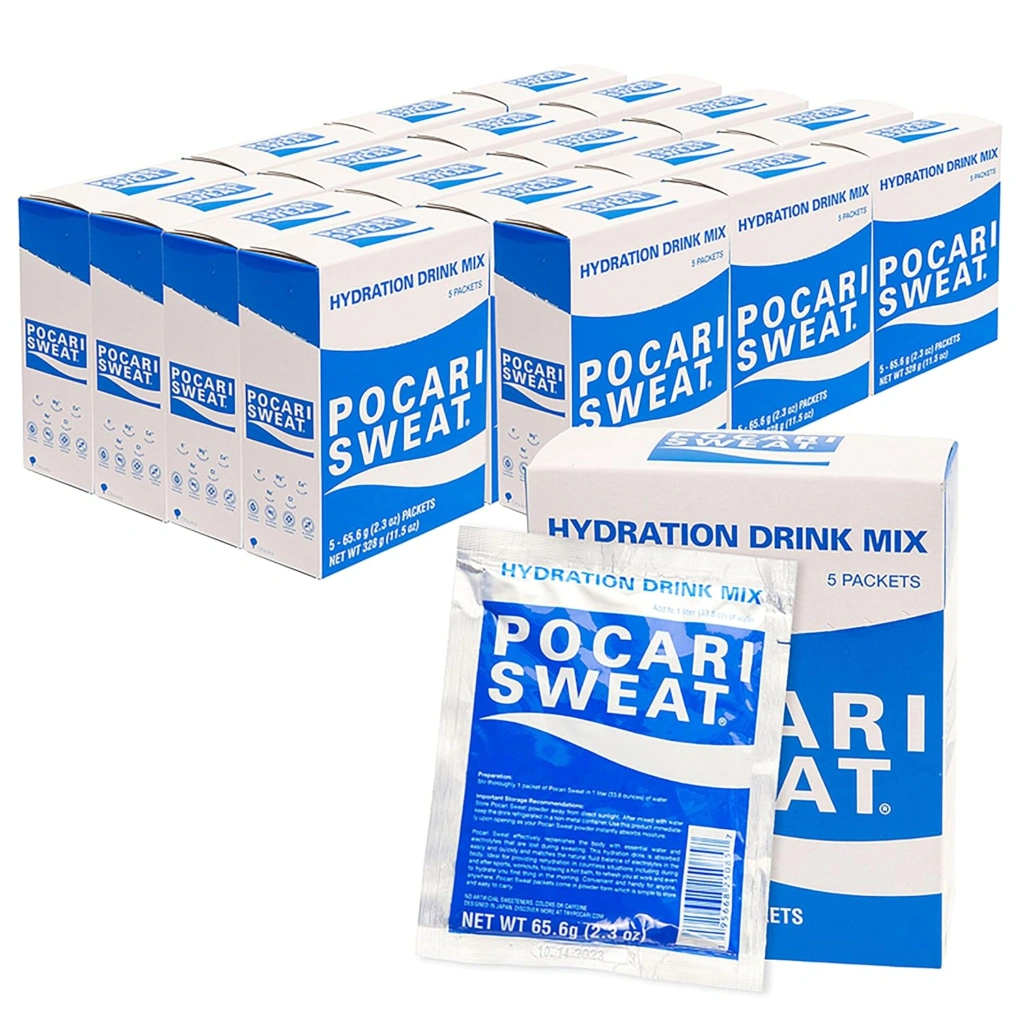
Hydrate before, during and after skating:
- Drink water all-day
- Drink water during practice breaks
- Consider electrolyte drinks for longer sessions
- Check your urine color – pale yellow is best
Post-Skating Recovery
Refuel within 30 minutes of skating with:
- Protein for repair
- Carbs to replenish energy
- Fruits or vegetables for vitamins and minerals
- Plenty of water to rehydrate
Where to Skate
Where you skate can make a big difference to your experience and progress.
Indoor vs Outdoor Rinks
Indoor rinks have consistent conditions, outdoor rinks have character.
Indoor rink benefits:
- Controlled temperature and ice quality
- Regular schedules and hours
- Access to lessons and programs
Outdoor rink advantages:
- Fresh air and natural environment
- Often free or low cost
- Unique atmosphere and community feel
Finding Skate Communities
Get connected with other skaters:
- Join a local skating club
- Go to open skate sessions regularly
- Take group lessons or workshops
- Follow skating social media and forums
Skate Maintenance
Proper skate care means optimal performance and longevity.
Sharpening
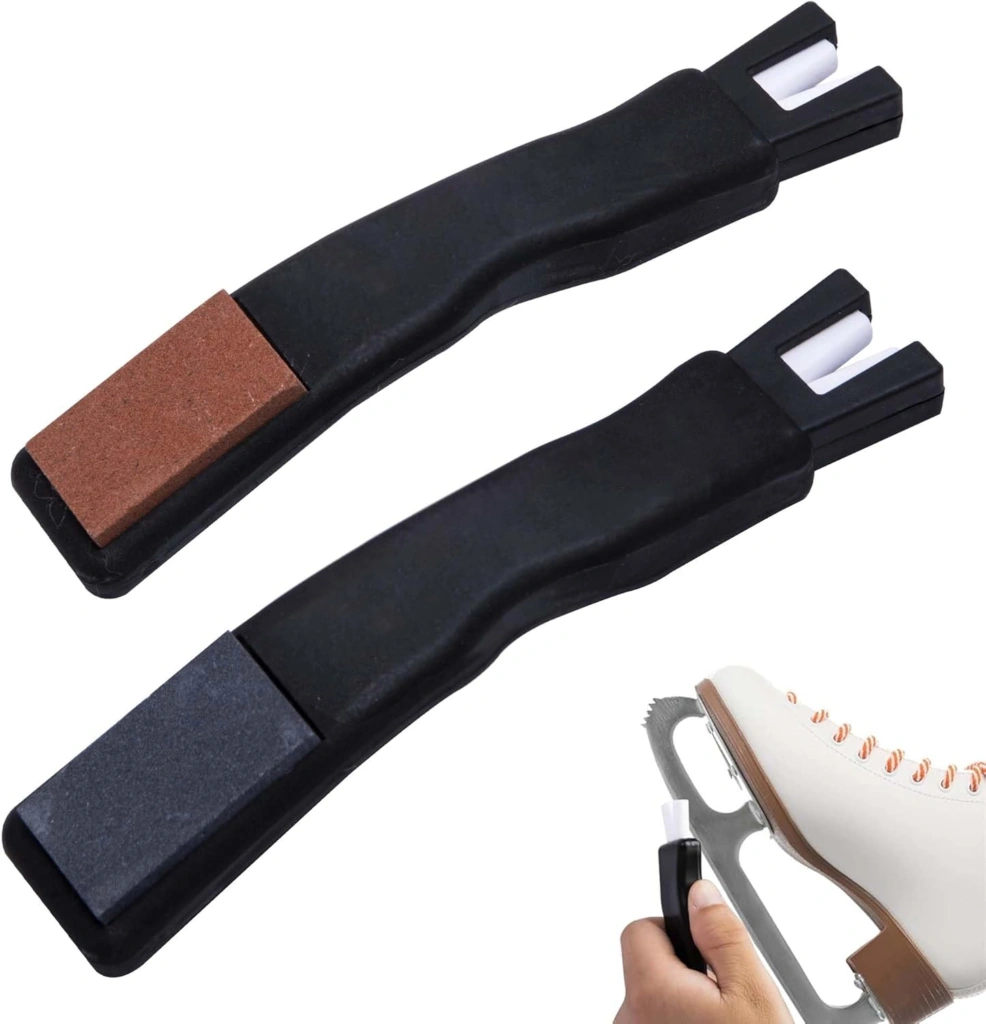
Sharpen your skates based on use:
- Recreational skaters: Every 20-30 hours of skating
- Competitive skaters: Every 10-15 hours or before competitions
- Check for nicks or flat spots often
Storage

Store your skates to prevent damage:
- Dry blades after use
- Use soft blade guards for walking off-ice
- Store in a well-ventilated area to prevent rust
- Use soakers to absorb moisture and protect blades
Boot Care
Keep your boots intact:
- Clean leather with a damp cloth and leather cleaner
- Use boot covers to prevent scuffs
- Stuff boots with newspaper to absorb moisture and keep shape
- Let boots air dry – no direct heat
Next Level Skating
If you want to take skating to the next level:
Competitive Skating
Compete:
- Work with a coach to create programs
- Practice under pressure
- Know the scoring system and requirements
- Have a competition day routine
Coaching
Share your love by teaching others:
- Get Certified
- Get experience as an assistant coach
- Develop good communication skills
- Stay up to date with skating and teaching techniques
Professional Opportunities
Audition for ice shows or touring productions
- Try pairs or ice dance if you like to partner
- Look into adagio or acrobatic skating
- Explore choreography or technical specialization
Bottom Line
- Master the fundamentals before moving on to advanced skills
- Prioritize safety with proper gear and falling
- Consistency and patience are key to improvement
- Cross train in other disciplines for overall skills
- Off-ice training supports on-ice progress
- Mental prep is as important as physical training
- Nutrition and hydration helps performance
- Proper skate maintenance means optimal performance
- Get connected with skating communities for support and inspiration
- Check out all the career options in skating
FAQs
How long does it take to learn ice skating?
Basic ice skating skills can be learned in 3-10 lessons, but mastery takes years of practice.
What age can I start ice skating?
Children can start ice skating at 3-4 years old, but it’s never too late to start as an adult.
Is ice skating a good workout?
Yes, ice skating is a great workout, burning up to 600 calories per hour and improving balance, coordination and leg strength.
How dangerous is ice skating?
Falls can happen, but proper safety gear and learning proper techniques reduces the risk of serious injury in ice skating.
Can I self teach ice skating?
While you can learn some basics on your own, we recommend professional instruction for proper technique and safety.
What muscles does ice skating use?
Ice skating uses the legs, glutes and core muscles and engages the arms and upper body for balance.
How tight should ice skates be?
Ice skates should fit snug with minimal heel slippage but not so tight they cause pain or restrict blood flow.
Is ice skating harder than roller skating?
Many find ice skating more difficult at first because of the slippery surface but difficulty varies person to person.
How often should I practice ice skating?
To see progress, practice ice skating at least 1-2 times a week, more often for faster results.
What’s the difference between figure skates and hockey skates?
Figure skates have a toe pick and longer blade for artistic movements, hockey skates have a shorter blade and no toe pick for agility and speed.
Affiliate Disclaimer: SkateNavigator.com may include affiliate links, which allow us to earn a small commission when you make a purchase through them. This helps support our site at no extra cost to you. Thank you for your support!
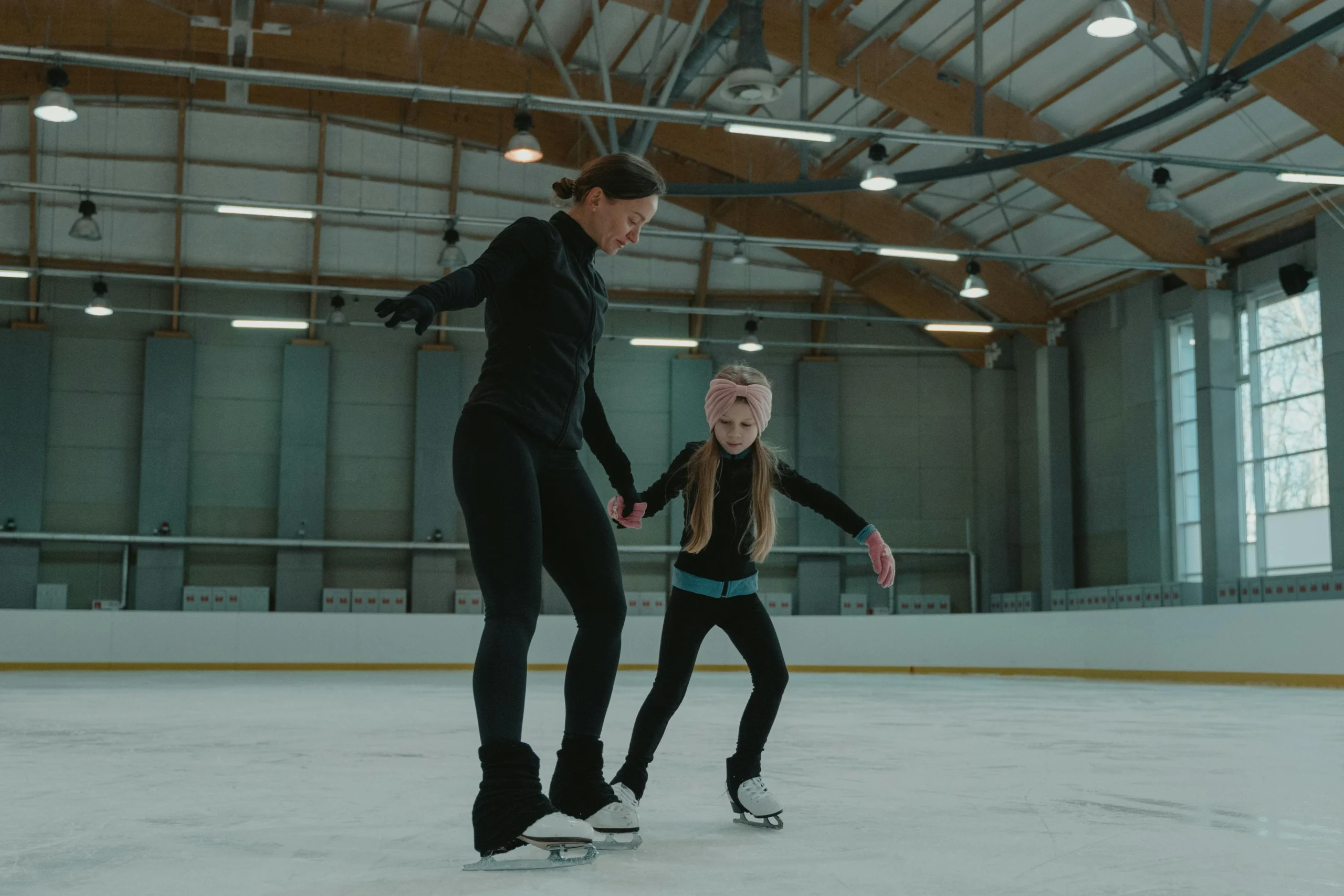

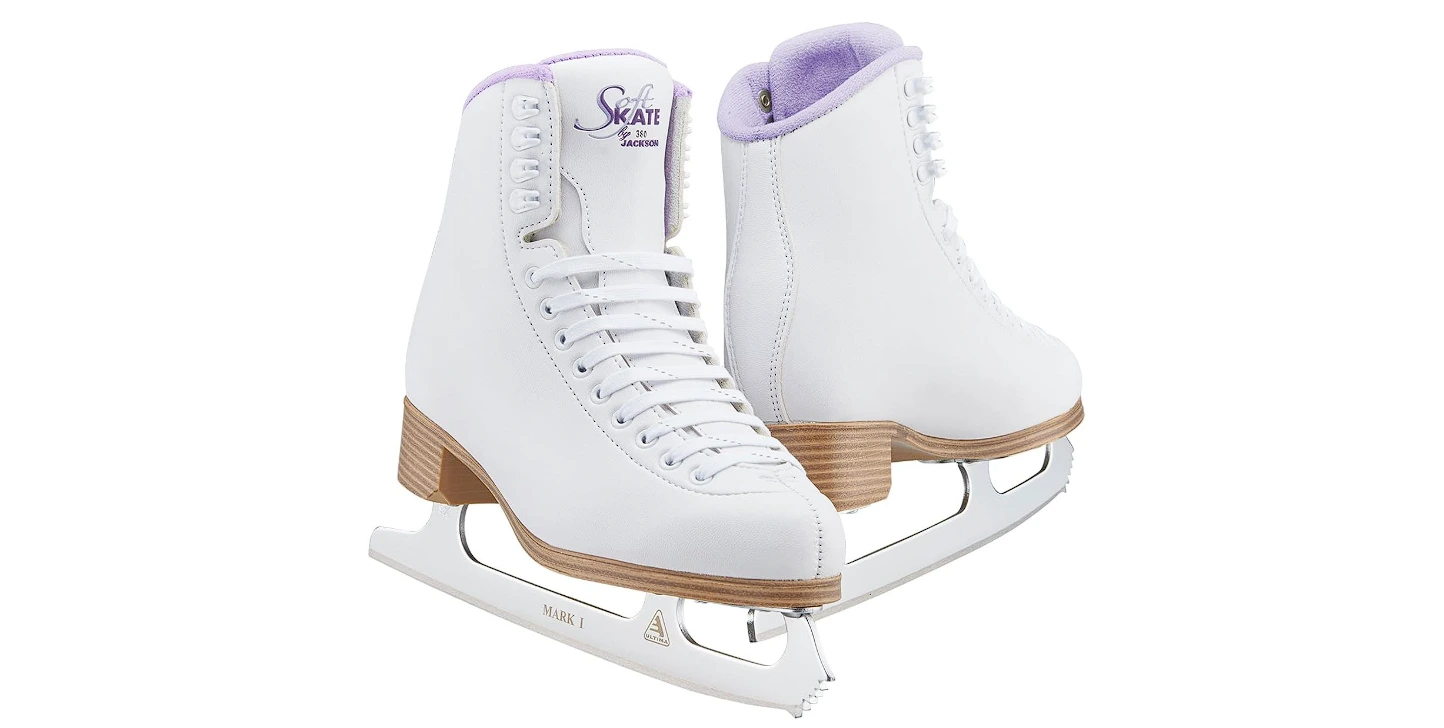
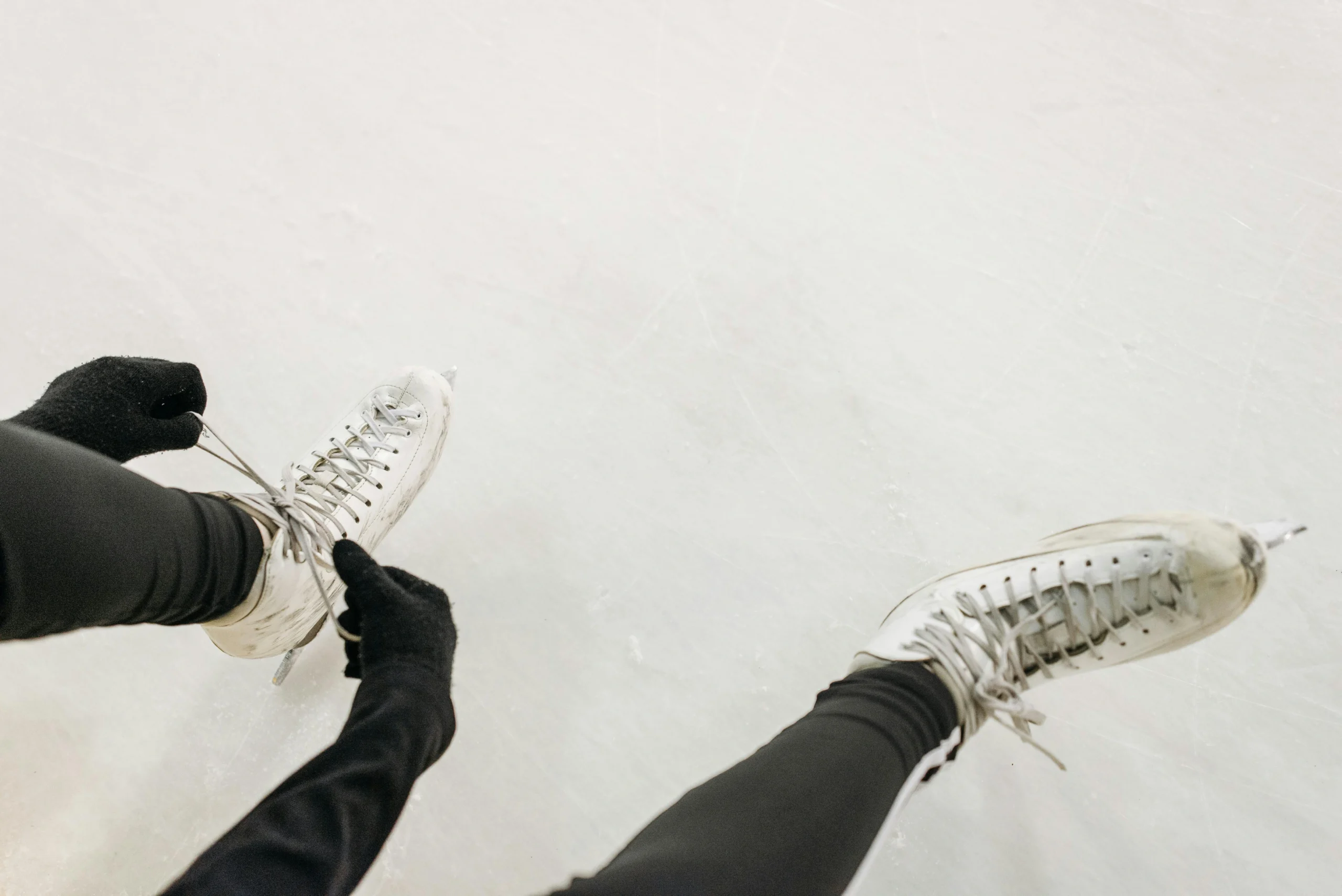
0 Comments